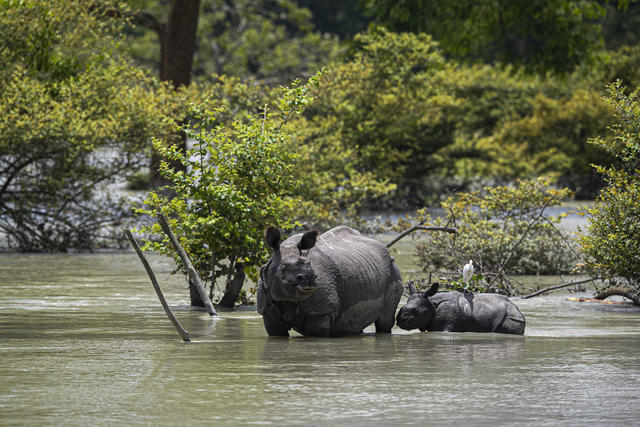GUWAHATI: A total of 847 wild animals were affected by floods in Assam in the past five years, out of which 511 animals were reported as dead.
Union Minister of Environment, Forest and Climate Change Kirti Vardhan Singh said that 511 animals were reported as casualties in the floods in Assam over the past five years.
“As per the information received from the State Government of Assam, a total of 847 wild animals were affected by floods in the state of Assam during the last five years, out of which 336 animals were rescued successfully and 511 animals were reported as casualties,” he said.
The Union Minister further said that the measures undertaken by the State Government of Assam to protect and conserve wildlife during floods include awareness campaigns and meetings conducted with residents of fringe areas to educate them on wildlife protection and conservation during floods.
Additionally, he said that loudspeaker announcements are made in villages on the do’s and don’ts if animals stray, additional forest staff from nearby divisions are deployed to patrol and perform flood-related duties in Kaziranga National Park, and they also monitor vehicle speeds on Asian Highway 1 (NH-37) to prevent animal deaths due to vehicle collisions.
“Additional security forces from the police department are deployed in the districts of Golaghat, Nagaon and Karbi Anglong. They assist forest personnel with anti-poaching duties and help mitigate human-wildlife conflict during floods. District Transport Officers and Motor Vehicle Inspectors from Nagaon and Golaghat districts control vehicle speeds on Asian Highway 1 (NH-37) from Bokakhat to Jakhalabandha, which passes along the edge of Kaziranga National Park,” the Union Minister said.
Adding ahead, he said, “Volunteers from non-government organisations and village defence parties monitor animal movements and help reduce vehicle speeds on Asian Highway 1 (NH-37). 33 new highlands and road-cum-highlands have been created to provide elevated resting spaces for wild animals during floods. Vulnerable areas are barricaded. Heavy vehicles are prohibited from using Asian Highway 1 (NH-37) at night to ensure safe movement of wild animals during floods.”
He further said that anti-poaching camps are equipped with country boats for regular monitoring and patrolling inside the park during floods.
“Each range has an emergency response team equipped with mobiles, wireless sets, traffic wands and flashlights. These teams regulate vehicular traffic and facilitate wildlife migration to higher grounds outside the park. A flood monitoring cell and control rooms are established in all range offices and the division office in Bokakhat to monitor flood levels,” said Kirti Vardhan Singh.
The Union Minister said that the flood level scales are installed in Dhansirimukh and Difalumukh with support from the Central Water Commission to assess inundation levels.
“Animal sensor systems have been installed in six locations to monitor animal movement and regulate vehicle movement accordingly and animal movements are traced through drones in the Karbi Anglong hills,” he said.
“State Disaster Response Force is deployed to provide additional support during rescue operations of wild animals and to ensure the safety of forest personnel inside the park. Staff from inundated and damaged camps are relocated to safer areas and engaged in patrolling the park’s periphery. Temporary camps are established at vulnerable sites frequented by wildlife to ensure their safety during migration,” added the Union Minister said.
According to the Kaziranga National Park Authority, 215 wild animals, including 13 one horned rhinos, died in this years’s flood in the national park. (ANI)






